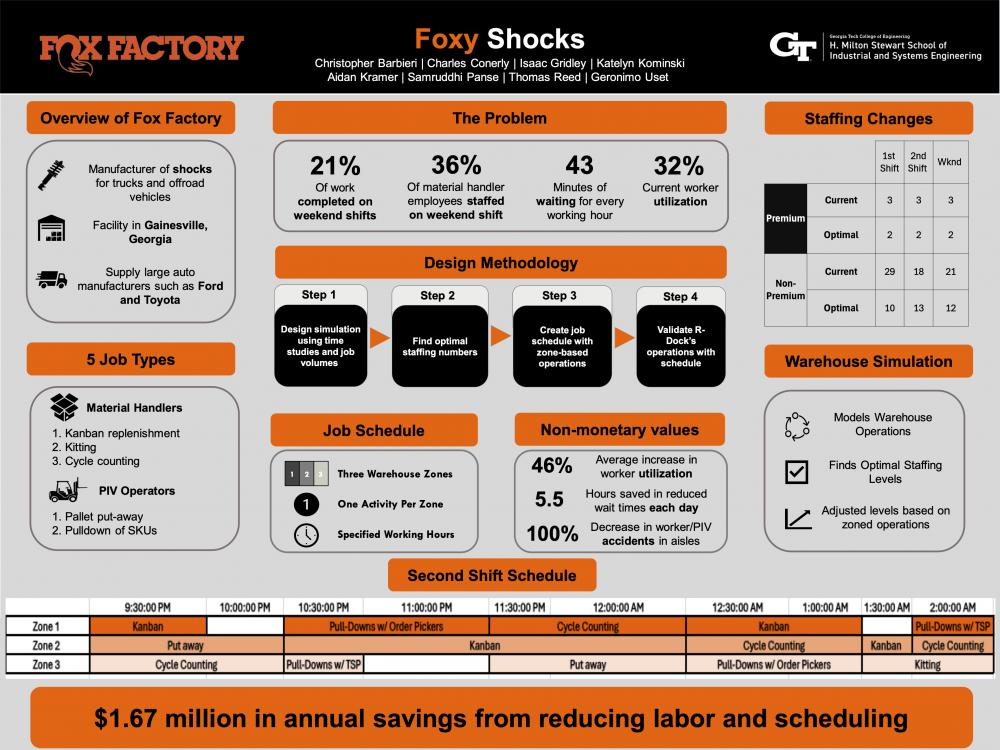Client Context
Fox Factory is a global leader in the design and development of shocks for high performance vehicles. Their facility in Gainesville, GA, has grown tremendously since its start in 2020. With this growth, they have faced storage and space constraints within the facility, causing them to combine their two receiving docks into one while using the other for additional storage space. Additionally, Fox Factory has hired more warehouse workers to keep up with the demand but are now observing extended periods of time in which employees are idle with little work to complete.
Project Objective
To reduce congestion in aisles and increase worker utilization, there is an opportunity to reduce the number of employees in the facility while also creating a comprehensive schedule of work tasks to determine how to allocate employees.
Design Strategy
There are five main job types in the facility, each requiring a different amount of work. By pairing data on daily job volume and time studies on job completion times, a Python model is designed to minimize the number of workers necessary to complete the maximum number of jobs Fox Factory expects to see across different days and shifts. This model will also simulate the completion times of each job type within the warehouse given the recommended number of workers.
While this addresses the problem of the increased idle time observed among workers, there have been unnecessary wait times workers are experiencing in the warehouse. Specifically, each shift there is roughly 5.5 hours of total wait time between powered industrial vehicles (PIVs) and workers that can be eliminated with a few simple changes. By implementing a zone-based task schedule throughout the warehouse, the wait time seen can be diminished and improving the safety of all workers in the warehouse.
The schedule is created using Excel Solver which is given a set of constraints and can then be used for linear programming. A main constraint is the time required to complete each job using the recommended number of workers output by the Python simulation. Additionally, to implement a zone-based schedule, a constraint is added such that only one activity can occur in each zone at any given time, eliminating workers having to wait on PIVs and vice versa.
As the recommended schedule includes timing for put-aways of pallets from the receiving dock to the warehouse, it must adhere to the constraints of the consolidation of the two receiving docks into one, which has not been implemented yet. Thus, we have created a Simio simulation to model how material will now be coming into the warehouse, allowing for testing of the schedule to ensure the receiving dock never exceeds capacity.
Deliverables
Recommended zoning schedule, scheduling tool via Excel Solver, staffing simulation via Python, recommended staffing schedule.
Value and Impact
After implementing the changes in labor and PIVs from the Python model and zone-based task schedule, Fox is expected to save $1.67 million dollars annually. Aside from the monetary gain, the client will reduce their waiting time by 5.5 hours per shift (1st and 2nd shift only) and increase utilization across all jobs and all shifts.


